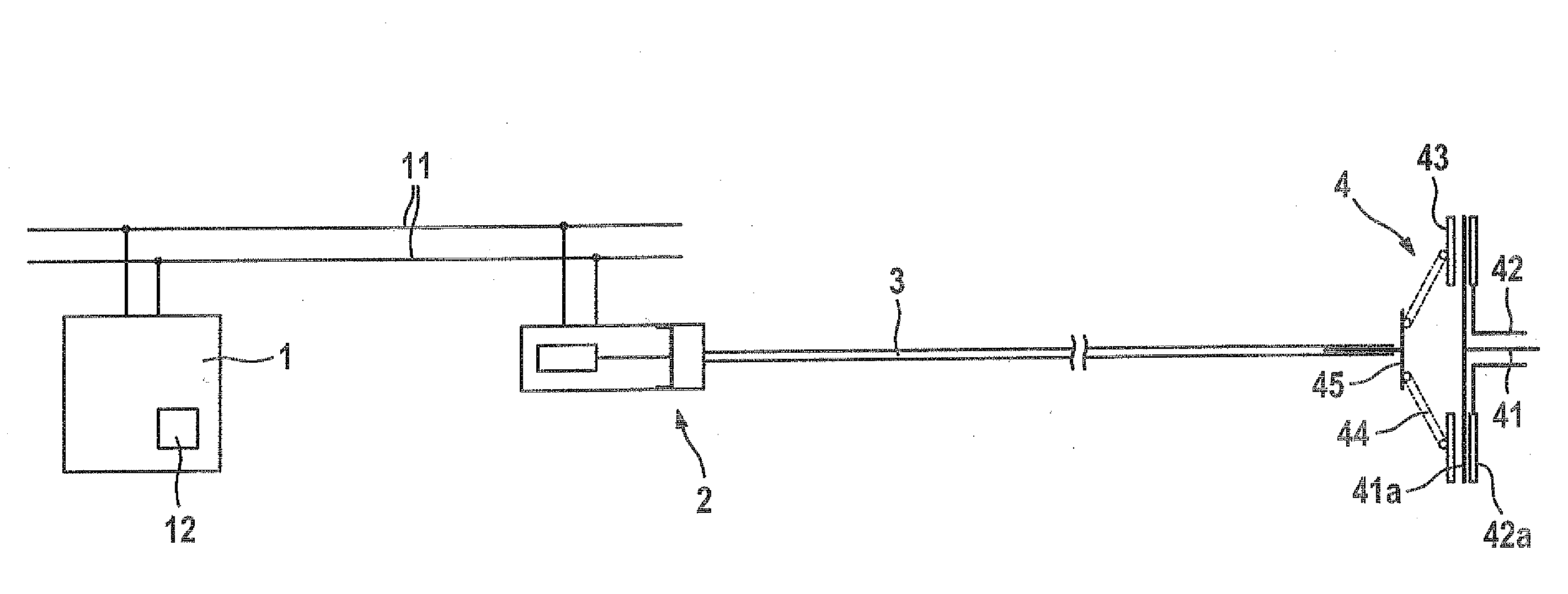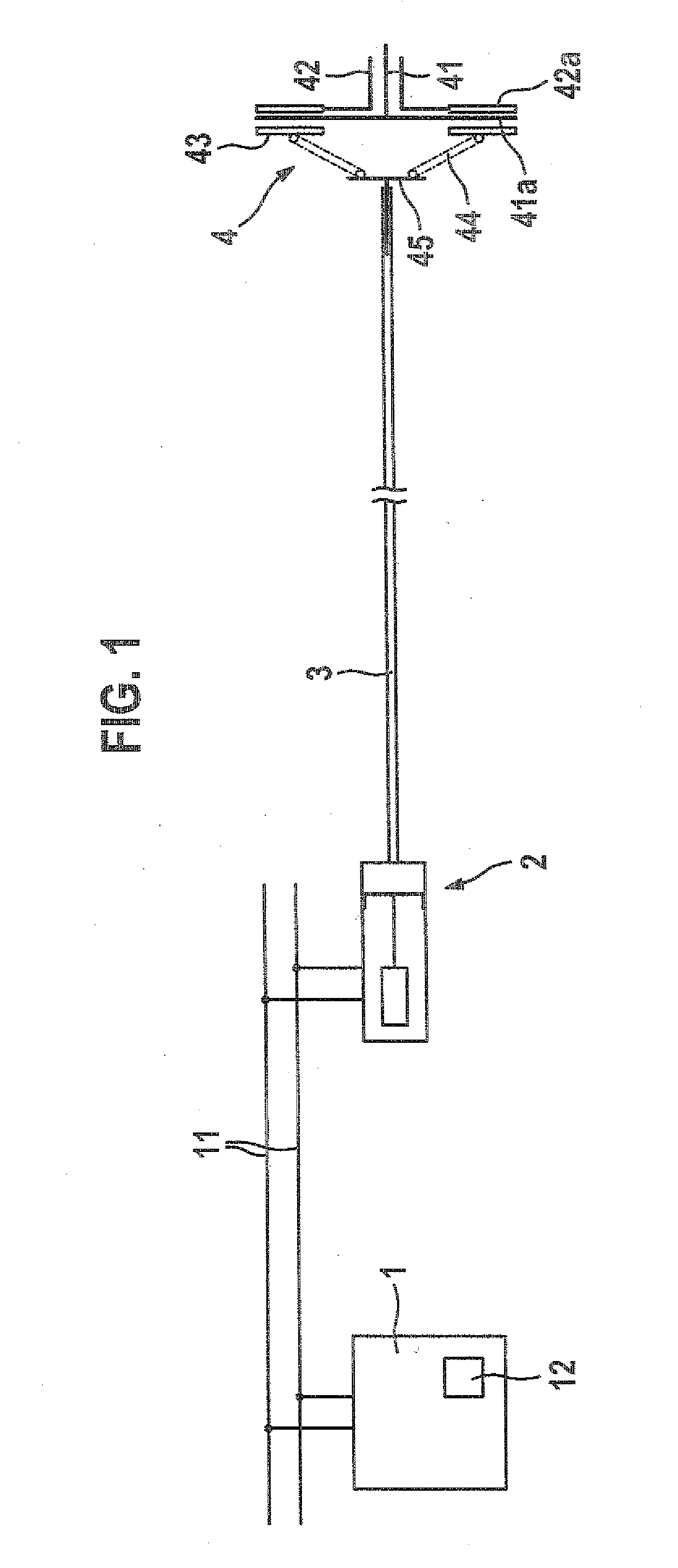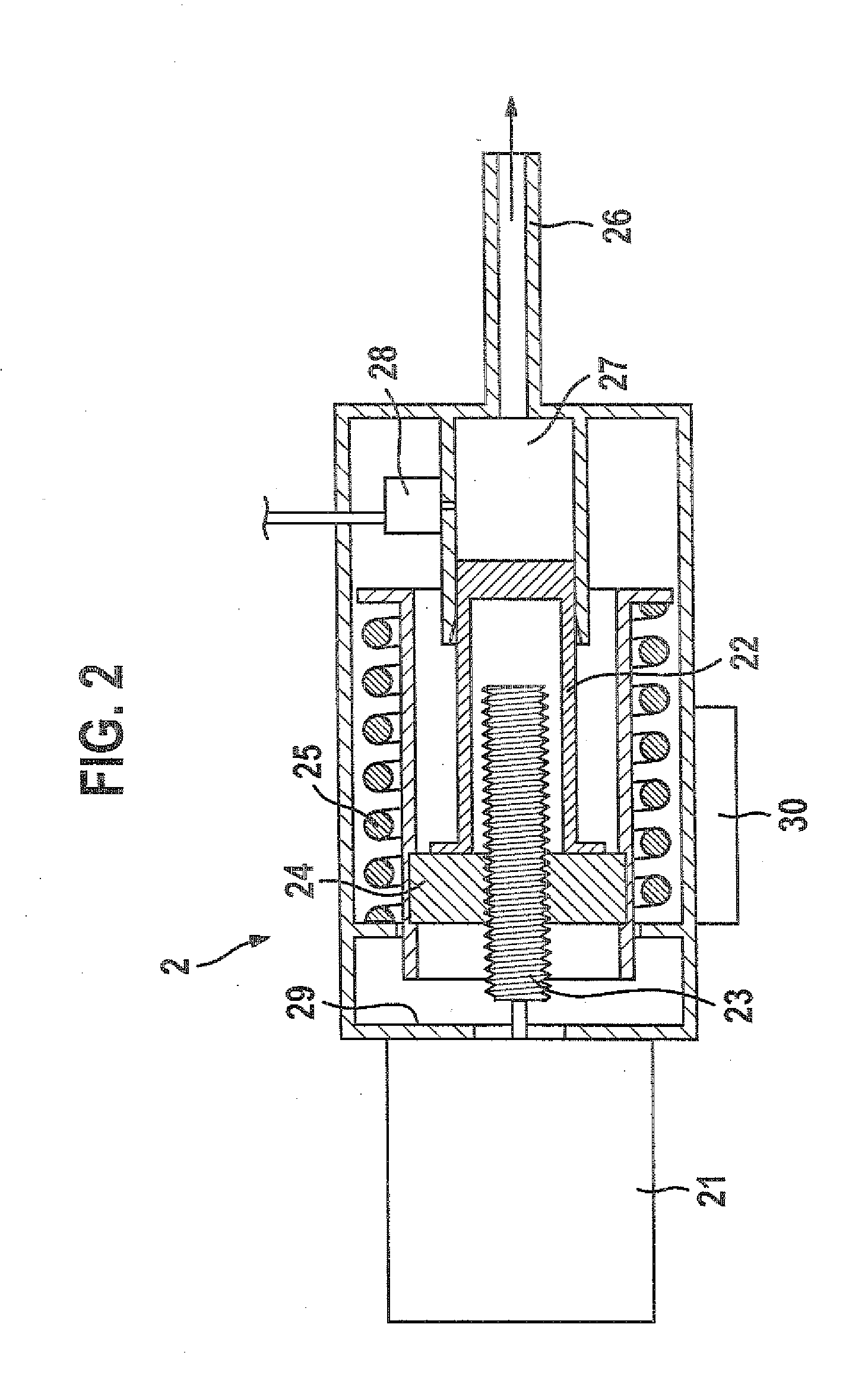Clutch system and method for controlling a clutch system
a technology of clutch system and clutch system, which is applied in the direction of clutches, non-mechanical actuated clutches, slip couplings, etc., can solve the problems of complex integration of sensors and clutches, and achieve the effects of less complication, reliable clutch confirmation, and quick destruction
- Summary
- Abstract
- Description
- Claims
- Application Information
AI Technical Summary
Benefits of technology
Problems solved by technology
Method used
Image
Examples
Embodiment Construction
[0016]In FIG. 1, an automated clutch system is shown schematically. The clutch system includes a control unit 1, which is for instance disposed in an engine control unit and is connected electrically to an electrohydraulic actuator 2 via a data bus 11, such as a CAN bus. The hydraulic connection of the electrohydraulic actuator is connected via a hydraulic connection 3 to a clutch 4.
[0017]The clutch 4 has a clutch input side 42 and a clutch output side 41, which can be coupled with one another for connecting and disconnecting a force transmission path. To that end, the clutch has a hydraulic actuation unit, which acts upon a disengagement layer 45 which is connected to a pressure plate 43, for instance via a clutch spring 44. The pressure plate 43 is pressed by the clutch spring 44 against the clutch disk 41a and the latter is pressed against the disk flywheel 42a, as a result of which the clutch input side 42 (input shaft) is mechanically connected to the clutch output side 41 (out...
PUM
 Login to View More
Login to View More Abstract
Description
Claims
Application Information
 Login to View More
Login to View More - R&D
- Intellectual Property
- Life Sciences
- Materials
- Tech Scout
- Unparalleled Data Quality
- Higher Quality Content
- 60% Fewer Hallucinations
Browse by: Latest US Patents, China's latest patents, Technical Efficacy Thesaurus, Application Domain, Technology Topic, Popular Technical Reports.
© 2025 PatSnap. All rights reserved.Legal|Privacy policy|Modern Slavery Act Transparency Statement|Sitemap|About US| Contact US: help@patsnap.com



